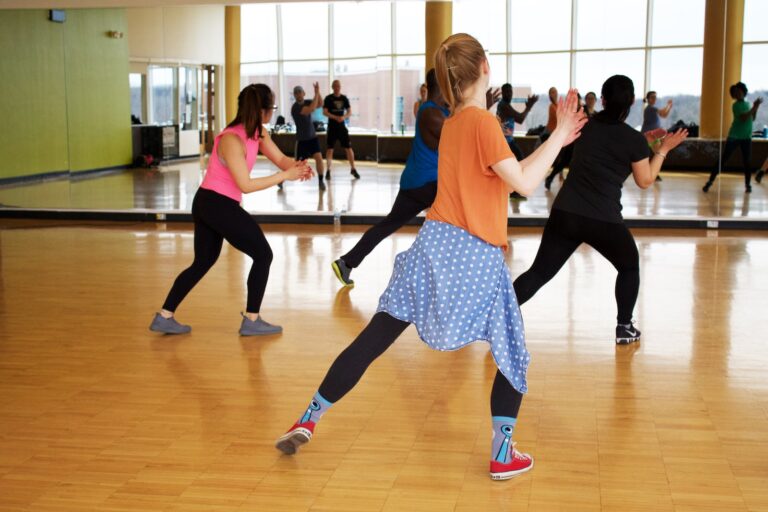The Importance of Rest Days in Your Workout Routine
Picture this: you’ve been hitting the gym like a champ, pushing yourself harder and harder each day to reach those fitness goals. But suddenly, you start feeling drained, unmotivated, and even worse – injuries creeping up. What could be the problem? Well friend, it’s time for a reality check – you might be overdoing it without giving your body the vital rest days that it needs!
Yes, resting may seem counterintuitive when trying to achieve fitness targets – but trust us when we say that incorporating rest days into your workout routine is essential for long-term success. Ready to learn more about why taking breaks from exercise can actually help you achieve greater gains in strength and stamina? Keep reading to find out!
What Are Rest Days?

When you’re head-down in the midst of a training cycle, it can be tough to take a day off. After all, you’re making progress and seeing results—why would you want to stop now?
But as any seasoned athlete will tell you, taking one or two days each week for active recovery is crucial to both your physical and mental well-being. Use your rest days wisely and you’ll come back stronger than ever.
Active recovery doesn’t mean vegging out on the couch all day (although that does sound tempting). On the contrary, this is the perfect time to cross-train with a low-impact activity such as yoga or light swimming. This will help increase blood flow to sore muscles and promote muscle repair. Just be sure not to go too hard—you don’t want to undo all the good you’ve done during your workouts!
In addition to giving your body time to recover, rest days are also important for preventing burnout. When we push ourselves too hard without taking regular breaks, we set ourselves up for injury and exhaustion. So take a step back, recharge, and come back ready to tackle your next workout with refreshed energy and excitement.
In short, treating rest days as an essential part of your overall workout routine is just as important as actually working out. It may not seem like much now, but you’ll thank yourself in the long run!
Benefits of Taking Regular Rest Days
If you’re like most people, you probably don’t give much thought to taking a rest day from your workout routine. But rest days are important for both mental and physical recovery. Here are some of the benefits of taking regular rest days:
- Improved mental well-being: Exercise can be tough on your body and your mind. Taking regular rest days gives your mind a chance to recover from the stress of exercise.
- Improved physical well-being: Just as your mind needs time to recover from the stress of exercise, so does your body. When you take regular rest days, your body has a chance to repair damaged muscles and replenish energy stores.
- Reduced risk of injury: Overworking your muscles can lead to injuries. By taking regular rest days, you allow your muscles time to recover from the stress of exercise and reduce your risk of injury.
- Improved performance: When you take regular rest days, you come back refreshed and energized, which can lead to improved performance in your workouts.
- Increased motivation: Taking regular rest days gives you something to look forward to, which can help motivate you to stick with your workout routine.
Rest days are an important part of any fitness routine. Taking regular breaks from exercise can help you stay motivated, improve your overall health, and reduce the risk of injury.
How to Incorporate Regular Rest Days Into Your Workout Routine
If you’re someone who’s constantly on the go, it can be hard to find time to rest. But trust us when we say that taking a few days off from your workout routine is crucial to your overall health and fitness. Here’s how you can incorporate regular rest days into your workout routine:
- Make sure you’re getting enough sleep. Getting enough sleep is essential for recovery, so make sure you’re getting at least 7-8 hours of shut-eye each night.
- Listen to your body. If you’re feeling tired or sore, that’s a sign that your body needs a break. Don’t push yourself too hard – take a day or two off to recover.
- Plan ahead. If you know you’ve got a busy week coming up, plan ahead and schedule in some rest days so you don’t end up overdoing it.
- Take it easy on weekends. weekends are a great time to take it easy and recover from the week’s workouts. Go for a leisurely walk or jog instead of hitting the gym hard – your body will thank you for it!
- Get outside. Take some time to get out into nature and just enjoy being in the outdoors. Being in nature has a calming effect on your body and mind, so it’s an ideal way to rest and recover.
By taking regular rest days, you’re giving your body the time it needs to recover from your workouts and stay healthy. You’ll also come back feeling energized and ready to tackle your next workout or activity with enthusiasm!
Tips for Maximizing the Benefits of Taking Regular Rest Days
- Make sure to schedule your rest days in advance so that you can plan around them and make the most of them.
- Use your rest days as an opportunity to focus on other aspects of your fitness routine, such as mobility work or active recovery.
- Use your rest days as an opportunity tofuel your body with healthy foods and adequate sleep so that you can come back stronger from your next workout.
- Finally, remember that listening to your body is key when it comes to taking rest days – if you’re feeling overly fatigued or sore, it’s probably best to take a day off from training.
By following these tips, you’ll be able to maximize the benefits of taking regular rest days and stay on track in reaching your fitness goals!
Alternatives to incorporating rest days in your workout routine that can still provide benefits
One alternative to taking a full rest day is to do an active recovery workout. This type of workout is typically lighter in intensity and focuses on movement rather than working up a sweat. This can help to improve circulation, range of motion, and joint health.
Another option is to cross-train on days when you’re not lifting weights. This can be anything from swimming to riding a bike to playing basketball. Not only will this give your muscles a break from lifting, but it can also help to improve your cardiovascular fitness and overall conditioning.
If you’re really wanting to get the most out of your workouts, consider scheduling a deload week every 4-6 weeks. During a deload week, you would still train but would cut back on the volume and intensity. This gives your body time to fully recover so that you can come back stronger and prevent injury.
Finally, if you’re looking for an even more restorative approach, consider adding yoga and/or stretching into your weekly routine. Both of these activities will help to improve flexibility and mobility while also helping to reduce stress and clear the mind.
Conclusion
The importance of Rest Days in your workout routine cannot be understated. Taking regular rest days allows the body to repair, rebuild and recover after a hard workout session and is essential for any athlete’s performance over time. It also helps with preventing injuries and keeps you motivated for your next active day! Achieving optimal results from exercise takes patience, commitment and consistent effort. But by implementing regular rest into your routine, it will ensure that every step along the way will bring you closer to achieving your desired outcomes.
Rest days are also the perfect time to focus on the other aspects of your fitness journey, such as your nutrition or even mental health. You can spend this time engaging in active recovery such as walking or stretching, or simply take some time off to relax and unwind. Whatever type of rest you choose, make sure it brings balance to your schedule while pushing you closer towards your goals.







5 Comments